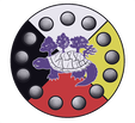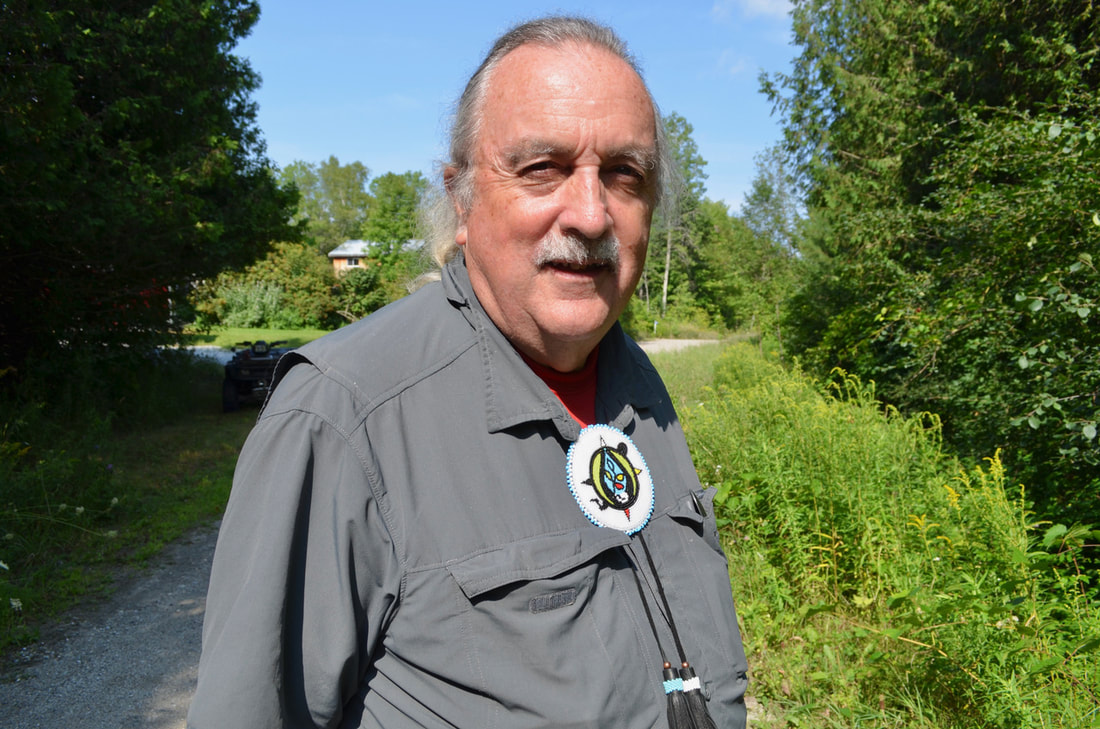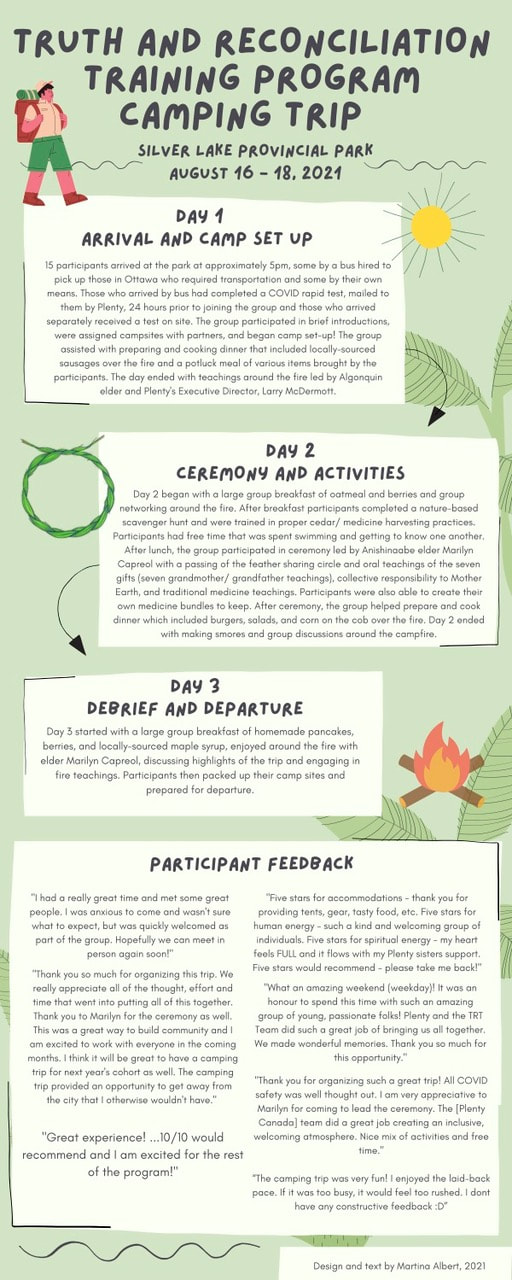|
September 30th, 2021
Today, on Orange Shirt Day and the National Day for Truth and Reconciliation, the Partners of The Healing Place | Tsi Tehshakotitsiéntha’ | Endaji mino-pimaadizin | Lieu de guérison are grieving past, and ongoing injustices against the First Peoples of Turtle Island and reflecting on how we can collectively make our journey towards healing. The Healing Place — created in partnership between Algonquins of Pikwakanagan, Mohawks of Akwesasne, Algonquins of Shabot Obaadjiwan, Plenty Canada, South Nation Conservation, Ontario Power Generation, and Forests Ontario — is both a tree planting site on the traditional territories of the Algonquin and Mohawk Nations and a collaborative project centered around creating and maintaining a space of healing to help restore land, language, and relationships. Rooted in values of ethical space and governance, The Healing Place project demonstrates how community members from both Indigenous and non-Indigenous backgrounds can come together and participate in the healing process of reconciliation, so that we may all learn how to engage in an equitable and just future together. To explore more about the background, governance, partnerships, and information about The Healing Place, you can read the article by clicking here.
0 Comments
 When I think back upon our initial work with Mayan communities in 1976 through the evolution of our mission, that increasingly emphasised engagement with Indigenous peoples within Central and South America, Africa, the Caribbean and Canada, I’m tremendously proud of our now historic and trend-setting accomplishments. It seems as though the world is finally catching up, or at least beginning to wake up. In the early 90s, opposition to this transition was significant. From the ranks of the Plenty Canada board through the halls and offices of the Canadian International Development Agency, their existed virulent resistance. Keep in mind that the United Nations Declaration on the Rights of Indigenous Peoples would not be adopted by the General Assembly until 2007. And Canada, remarkably, was one of only four countries that voted against its acceptance, the others being Australia, New Zealand, and the United States. It wasn’t until 2016, nine years later, that the Declaration was finally endorsed by the Government of Canada. Further, the country is still hashing out a framework for how to incorporate UNDRIP into Canadian law. While Plenty Canada has been intellectually engaged in Indigenous policy matters and been working directly with Indigenous partners around the world on tangible and useful projects for their communities for decades, it seems that only recently have the true consequences of the historic injustices toward Indigenous peoples been revealed. Of course, we know different and prefer not to think it would take the discovery of mass graves of Indigenous children buried at the sites of former residential schools to create the seismic awakening so fully needed within Canada. Which is why I’m so thankful to you, our donors and partners, for the support you’ve provided Plenty Canada over the course of our journey, one that has advocated for and supported Indigenous peoples within Canada and internationally. We know the Indigenous world as a place of great humanity, knowledge, and cultural wisdom, of philosophies and teachings that if integrated broadly into society could have mitigated against rapacious greed and the accelerating destruction of our environment and atmosphere. The disregard of Indigenous knowledge systems has come at a terrible cost, one measured by loss of biodiversity and habitable lands that have otherwise sustained life for millennia. But if we haven’t listened before, it’s certainly time to listen now. In this issue of contact, we report on Plenty Canada projects that continue to express our core values. For example, our recently approved project funded by the Greenbelt Foundation, Wisdom from Knowledge: Documenting and Sharing the Indigenous Biocultural Richness of the Greenbelt, seeks to bridge Indigenous traditional knowledge systems with Western science. It is being paired with another of our innovative projects, The Great Niagara Escarpment Indigenous Cultural Map, to gather Indigenous knowledge and scientific data and resources to establish a repository of information that will enhance awareness of the importance of preserving natural world ecosystems and green spaces to safeguard Indigenous flora. These and other stories, I hope, continue to reveal our honourable principles and intentions. I thank the members of our intelligent and dedicated staff who’ve contributed to this edition of our electronic newsletter and hope you enjoy reading it! Chi Miigwech. Niá:wen. Merci. Thank you. Larry McDermott Executive Director Plenty Canada With the support of a major grant from the Greenbelt Foundation, Plenty Canada is partnering with the University of Guelph to launch a biocultural knowledge and mapping project to begin restoring Indigenous knowledge, visibility, and character to the Greenbelt as an important Indigenous cultural landscape within Ontario.
Entitled Wisdom from Knowledge (Nbwaakaawining binjibaamgad Gkendmaawziwin): Documenting and Sharing the Indigenous Biocultural Richness of the Greenbelt, the project will result in three exciting deliverables in year one. These include the development of a taxonomic list of culturally significant Indigenous plants in collaboration with Indigenous plant knowledge holders; research and assembly of content for an ethnobotanical atlas or field guide that includes both Western science and Indigenous knowledge such as morphology, life-history, conservation status, and Indigenous uses; and the building out of Plenty Canada’s technology platform, The Great Niagara Escarpment Indigenous Cultural Map, to embrace the entire Greenbelt region, including engineering and custom programming of the web platform’s superstructure and content management system to house knowledge content and photo and video documentation. “We’re honoured and delighted to have received this grant award,” said Plenty Canada Executive Director Larry McDermott. “We believe that bridging Indigenous traditional knowledge systems with Western science is essential to practicing effective environmental stewardship. In recent years, Indigenous-led frameworks that braid together both Western science and Indigenous knowledge systems have been used to guide conservation activities, such as the establishment of Indigenous Protected Areas, the stewardship of cultural keystone species (e.g., black ash, moose), and in cross cultural educational programming with youth.” As an institution of higher learning Guelph University has purposefully engaged with Plenty Canada to identify and launch programs that broaden the knowledge and perspectives its conservation students learn and apply to their profession. Robin Roth, professor in the Department of Geography, Environment, and Geomatics, and the university’s collaborator on the project, envisions significant outcomes that will benefit those communities and organizations affiliated with the Greenbelt. “Along with Dr. Faisal Moola, we are thrilled to be collaborating with Plenty Canada on this project and to assist in making more visible the Indigenous biocultural values present throughout the Greenbelt,” said Professor Roth. “The map and the atlas will make for excellent teaching tools and will provide greater access to the public so that we can all better understand the historic and contemporary importance of the Greenbelt for Indigenous peoples.” The awarded project builds upon the success of a previous pilot project that Plenty Canada launched in 2017 in partnership with the Niagara Escarpment Commission and Canadian Commission for United Nations Educational, Scientific, and Cultural Organization (CCUNESCO). Its purpose was to document, celebrate, and safeguard important Indigenous heritage resources on and along the Niagara Escarpment. The first phase of that project (also highlighted in this edition of the contact newsletter) included the development of an interactive prototype digital map of the Niagara Escarpment named The Great Niagara Escarpment Indigenous Cultural Map. As a logical complement and extension of this work Plenty Canada is now planning to expand its research and mapping project to the entire Greenbelt region in an effort to gather Indigenous knowledge and scientific data and resources to establish a repository of information that will aid public education and serve as the foundation for enhancing awareness of the importance of preserving natural world ecosystems and green spaces to safeguard Indigenous flora. By combining Western science and Indigenous Knowledge systems in the service of educational and member organisations of the Ontario Greenbelt Alliance, as well as the general public, these biocultural resources will enhance and strengthen the goal of ensuring the ‘Greenbelt remains permanent, protected, and prosperous.’ The mapping component of the project will be led by Plenty Canada Senior Advisor Tim Johnson. “Place-based learning, sometimes called pedagogy of place, has gained ascension in teaching practices and educational curricula for its immersive and experiential qualities that connect students to local heritage, cultures, landscapes, ecosystems, and experiences that serve as a foundation for understanding Indigenous histories and scientific knowledge,” said Johnson. “Plenty Canada has employed this approach within its Indigenous Cultural Map through the development of destinations including historic sites, public spaces, and natural world features that constitute prominent learning locations. This pedagogy prioritises engagement and authenticity in ways that make learning real and memorable.” Designed as a two-year project that will include numerous Indigenous knowledge holders and science advisors from Guelph University and elsewhere, it will result in the implementation of a pedagogical strategy that utilizes Indigenous biocultural mapping content to appropriately process and share Indigenous histories, knowledge, and stories of the Greenbelt, including the use and application of the field guide that will include ethnobotanical species for field identification. Within the context of place-based learning as described, both the field guide and mapping platform will provide ready access to the information collected by the project. From an Indigenous perspective and educational standpoint, a significant aspect of this project seeks to stimulate and nurture empathic traditions to foster deeper relations and connections between Ontario’s citizenry and nature. Humans begin life in an empathic state given their dependence upon others and that which nature provides, but over time learn the behaviours of self-interest as they grow to adopt the philosophies, rules, and values promoted within modern culture. However, other cultures, particularly the cultures of Indigenous peoples, remain rich with empathic traditions that present far different foundations for human consciousness. This educational addition to the Greenbelt will play a role in helping to activate both the knowledge and empathy required to ensure respectfulness and gratitude for the living earth, shaping human intention and guiding responsible human behaviour. — Staff report The Great Niagara Escarpment Indigenous Cultural Map emerged from a 2017 outreach project conducted by Plenty Canada in partnership with the Niagara Escarpment Commission that sought to increase involvement by Indigenous peoples in the co-management of the UNESCO designated Niagara Escarpment Biosphere Reserve. Following consultations held in Six Nations of the Grand River and Tobermory, Indigenous participants advised that the first step toward restoring trust and building relations should include the development of an Indigenous cultural map to return Indigenous knowledge and stories back upon the lands of the Niagara Escarpment Biosphere. Note that the term “Reserve” has since been removed from its name.
Under the guidance of Artistic Director Tim Johnson with Plenty Canada Executive Director Larry McDermott and Senior Advisor Deb Pella Keen, in association with the Canadian Commission for United Nations Educational, Scientific, and Cultural Organization, The Great Niagara Escarpment Indigenous Cultural Map was created. Resourced by grants from the Ontario Arts Council and the Aboriginal Languages Initiative of Canadian Heritage emerged a revolutionary multimedia online resource that provides visitors with substantive information and knowledge, beautiful photography, and captivating videos that reveal important Indigenous historic, cultural, and ecosystem locations. From Niagara Falls to the western region of Manitoulin Island, Indigenous occupation is prevalent throughout the Niagara Escarpment within Canada. As the map continues to progress, it will eventually provide information resources that document some 13,000 years of Indigenous inhabitation. Though the site is currently in prototype phase, it evolves as Plenty Canada continues to partner with Indigenous advisors and a growing network of professional allies to document, celebrate, and safeguard important Indigenous heritage resources. For example, in partnership with Landscape of Nations 360° the map houses the Indigenous Niagara Living Museum Tour, a virtual tour where visitors to the site get to explore key events and locations involving Indigenous history and culture in the Niagara Region. These include virtual visits to the newly developed memorials Landscape of Nations: The Six Nations and Native Allies Commemorative Memorial and the First Nations Peace Monument, that recognize and honour Indigenous peoples’ contributions prior to and during the War of 1812. A new function added to the map features destinations that have been translated into Indigenous languages, including Anishinaabemowin (Anishinabek), Kanien’kéha (Mohawk), and Michif (Métis). This function is available in the site’s table of contents or within each active destination’s menu bar by simply selecting one of the language tabs. Also, another exciting platform is in the process of being developed in partnership with Guelph University, with support from the Greenbelt Foundation, to create an in-depth biocultural map of Indigenous plants across the entire Greenbelt region. Additional Indigenous plant identification along the Laura Secord Legacy Trail is currently underway with the support and participation of Brock University. Visitors to The Great Niagara Escarpment Indigenous Cultural Map will be able to dive deeply into Indigenous knowledge and experience ‘Two-Eyed Seeing’ through an easy, functional, and organized mapping system. Upon entering the site, visitors can select the menu at the top right corner and choose an option for specific pins to appear under the Browse Destinations header, or simply browse all of the pin locations by selecting the Browse Destinations tab. Upon selecting a pin location, visitors will be able to navigate easily through the destination’s menu. To start, click on a pin and select More Info. A sidebar will appear to the left that consists of brief information about the location. For even more information, select Open Menu at the top left of the sidebar. A menu will appear that displays Detailed Description, which contains a thorough description about the pin location, an Image Gallery for professional photos of the location, a Video Gallery, Quotes & Interviews, and lastly, Additional Resources. Even though it’s already become a fascinating tool for learning more funding is needed in order to advance the prototype Indigenous Cultural Map into a fully formed system that includes the development of its own pedagogy and Indigenous curriculum. However, for system management the platform needs a ‘style guide’ to ensure consistency as volumes of new content are developed and added into the site. More funding is needed to produce the style guide, for adding more translated language destinations, and to finance Indigenous scholars and artists to complete the contents for current pin locations currently serving as place holders in the cultural map. Future ideas are also in development, like adding Indigenous archaeological sites to reveal the breadth of Indigenous occupancy and inhabitation along the Niagara Escarpment. However, the opportunities for building a useful, creative, and beautiful Indigenous Cultural Map are endless. Visit the prototype map at http://www.thegreatniagaraescarpment.ca/. Updates to the map are done on an ongoing basis, so continue to check it out to search for new content and features. — Amanda Harwood Plenty Canada’s Caribbean project, Cuba Indigeneity — Values and Knowledge, is based in the remote mountain and coastal region of eastern Cuba, the Oriente. It partners with a significant population of Taino-guajiro (rural) Indigenous kinship families under the leadership of a traditional cacique (chief), women elders, and a new generation of leaders. This population of people with Indigenous heritage has been marginalised from contemporary history, even considered extinct in many national histories. In fact, it has been ‘hiding in plain sight,’ and it is now re-emerging and reconnecting as an extended Native community of related families.
Since 1995, quietly and persistently, Francisco (Panchito) Ramírez, elder of this core community of Cuban Indigenous people, at Caridad de los Indios, Guantanamo Province, has led his people to reweave the families, to unite once again, as they had lived before dispersing throughout the mountain valleys and migrating to towns and cities in the past fifty years. His own elder cacique had told him, “We were as a Great Family; the problem of one was the problem of all.” The Gran Familia today consists of some twenty multi-homestead localities or communities (caserios). As a trunk of Native families, it has conducted a family count (cuenta familiar), which has so far listed some fifteen thousand people. Among the main leaders of the Native reweaving of families and communities, Idalis Ramírez Ramírez, daughter of the cacique, and her main helper, Solaine Castillo Ramírez and others, joined their various skills to the task. This group has manifested the cacique’s orientation to help him reconnect the Cuban Indigenous people of the eastern mountains. Through work led by myself, Jose Barreiro, Taino writer-activist, and Alejandro Hartmann, Cuban historian, we have partnered with the cacique over two decades to gather the elders and younger leaders and generate cultural and historical research through public events. This intense work fed a series of regional gatherings on the Indigenous Legacies of the Caribbean and led to increasing recognition for the Indigenous people of Cuba. The Gran Familia people, marginalised through most of the 20th century, are in a serious process of self-actualization. The main objective of our project is to assist this self-actualization. Recognising the traditional values and knowledge of the communities, we support their enhanced visibility and community enhancement objectives. This project helps empower the Native descendant families in the eastern Cuba mountains to renew their ties, ceremonial and agricultural traditions, and identity through grass-roots activism. We also celebrate the emergence of next generation leadership and support and advantage the emergence of women's leadership as primary in the networking or reweaving of Native family community homesteads and enterprises. The women lead in the coordination of the people from the many communities and work to reverse the cultural dissolution caused by the dispersals of trunk families from their home geography that began in the late 20th century, resulting in the diminishment of indigenous Gran Familia identity and traditional knowledge. The Cuba Indigeneity project challenged the official historical dictum of extinction and has helped achieve a good measure of national and international recognition for Cuban indigeneity, as represented by the tribal trunk guided by Cacique Panchito since he inherited the title of cacique in the mid 1970s. Over years of patient work, we have linked and dialogued with important Cuban institutions, such as Casa de las Americas, the National Historians and Conservators Network, and the Foundation for Nature and Humanity, to encourage their understanding and support for the cacique’s dream of recognition of Cuban indigeneity. Signalling a culture and identity movement among Cuban indigenous communities, this timely initiative supports cultural and educational gatherings, projects in documentation, intergenerational transfer of traditional knowledge, and the development of agro-ecological production opportunities. — Jose Barreiro, Taino Project Manager On Saturday July 24th, 2021 Plenty Canada, along with the Youth Circle for Mother Earth (YCME), hosted a “Two-Eyed Seeing BioBlitz” event at our land-based learning CampUs in Lanark, Ontario. This event was part of the YCME’s youth led BioBlitz across Ontario (view link below for more details). The event was a continuation of a webinar presented on July 19th by Gary Pritchard where he discussed the meaning of a “Two-Eyed BioBlitz” and conservation through an Indigenous perspective.
The goal was to get outside, reconnect with the land, and identify as many species as possible. The data collected is being used to create the foundation for an inventory of the aquatic and forest-based ecosystems encompassed by the Algonquin nature preserve that surrounds the Plenty Canada CampUs. Five eager youth participants joined the Plenty Canada team and Gary Pritchard for the day, where we were able to successfully identify over 120 species. The majority of species identified were plants, followed by insects, trees, and birds. Some of the coolest sightings of the day include a red fox, female American pelecinid wasp, Eastern tiger swallowtail, Northern leopard frog, and meadowhawks. Participants also benefited from learning about the relationship between the Crown and Indigenous peoples of Canada, reconciliation, and our innate responsibility to the land and Mother Earth from elder Larry McDermott, Plenty Canada’s executive director. In addition, the group heard about the everyday adventures of an Indigenous conservation ecologist from Gary Pritchard. We would like to extend our gratitude to all participants and staff who made this event possible. We also acknowledge the financial support of TD Ready Commitment, Government of Canada, and the Congregation of the Sisters of St. Joseph in Canada. Miigwetch, thank you! For more information regarding the YCME youth led BioBlitz across Ontario, please visit Plenty Canada’s website: Youth Circle For Mother Earth Ontario BioBlitz 2021 — Emily Morris, Invasive Species Summer Technician and Martina Albert, Reconciliation, Tree Planting, and Carbon Offsetting Intern Among its many operational and programmatic plans Plenty Canada's CampUs renovation prioritizes environmental sustainability. With this objective in mind, the organization has decided to focus heavily on the area of solar energy, adding new elements to its existing solar apparatus and improving the components that have already been installed. These improvements will stand as the most visible example of the organization's commitment to green energy.
Anyone who has visited Plenty Canada’s Lanark office for events or workshops knows that the organization has been committed to renewable energy for many years. For example, in the early 1990s Plenty Canada’s Village Technology Training Centre in Lesotho utilized photovoltaics and a wind generator to supply power to offices, classrooms, a soy dairy, and accommodations. Now, some 30 years later, that commitment is expressed in plans for the CampUs to incorporate three innovative solar electricity approaches. These include MicroFIT, net metering, and off-the-grid technologies. Ontario's MicroFIT program was created in order to allow 'micro' solar systems (10kw of power or less) to 'sell back' a portion of the power they produce back to their local grid service provided, for a fixed per kilowatt price. Though the MicroFIT program is no longer accepting new applications, Plenty Canada was fortunate enough to enter into a 20-year contract with the program, meaning that the solar power the office currently produces contributes to the green energy output of the entire region. Net metering is a similar cost-saving and environmentally friendly program. Through Hydro One, Plenty Canada will be able to save money on its electricity bill by sending some of its excess solar energy back into Hydro One's grid. For a non-profit organization every dollar counts, so even this small amount of savings allows Plenty Canada to divert more of its budget towards sustainable projects at home and abroad. Finally, and very importantly, Plenty Canada's planned solar apparatus will contain an off-the-grid application. This allows Plenty to continue operations in the event of a power outage and operate completely on solar energy for a short period of time. Plenty's current MicroFIT solar system has served the organization well for many years — and has become almost a signature visual element of the organization's main office. But with the organization’s ongoing capital campaign, the system's capabilities will be taken to exciting new heights. On a basic level, the system's power output will be radically increased. Plenty Canada hopes to install an additional 36 ground-mounted panels, each producing 435 watts of power on a 10kw converter. For a simple comparison, this installation will save Plenty Canada $3,800 on hydro bills each year. The new solar grid will also be outfitted with a powerful new battery backup, capable of keeping the office, furnace, and Internet running for days. Because Plenty Canada provides Internet to over 20 homes in the region, this means that the entire community will benefit from the solar improvements. As an additional community benefit, the new installations will include at least one charging station for electric cars, as both a convenient tool for the public and an expression of Plenty Canada’s commitment to green energy. Though these may seem like extremely drastic improvements for a single capital campaign, the organization has taken the position that a rapid transition to green energy is required in order to create a sustainable future for everyone. These additions will continue an important transformation for the organization and continue throughout the coming years. As the rest of the country appropriately begins its shift away from fossil fuels, Plenty Canada will continue to advocate for respect toward the environment and for a society that follows natural law (science). — Breton Campbell 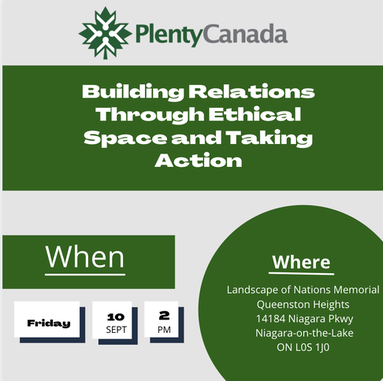 When: Friday September 10th, 2-5pm Where: Landscape of Nations, located on Queenston Heights, 14184 Niagara Pkwy, Niagara-on-the-Lake, ON L0S 1J0 Our objective for this first in-person meeting is to introduce the Building Relations project and hear valuable feedback participants. This will allow us to collaborate and tailor the curriculum for the training program together. The forecast is sunny and 23℃ but please bring a sweater or windbreaker in case. Hand sanitizer will be provided, chairs will be placed socially-distanced, and washrooms are accessible nearby. We hope you can join us! For more information, as well as who to contact read the Letter of Invitation by clicking here. 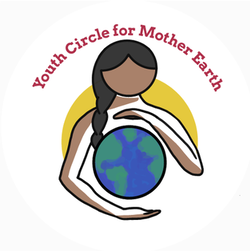 Plenty Canada is pleased to be co-hosting Youth Circle for Mother Earth's first cross-cultural BioBlitz! Youth Circle for Mother Earth (YCME) will be hosting a youth-led BioBlitz across Ontario, online and on site at the local Plenty Canada headquarters. A BioBlitz is an event that involves searching for and identifying as many species as possible over a short period of time. Not only will this event be a fun and exciting way to contribute to crowd-sourced Western science but participating youth will also be contributing to Indigenous-led knowledge and conservation. Youth aged 14-30 are encouraged to participate, but all are welcome. For more info and registration click here. |
|
-
Home
- Donate
-
Projects
-
Canada
>
- Plenty Canada CampUs
- The Healing Places
- Two-Eyed Seeing Bird Knowledge
- Niagara Escarpment Biosphere Network
- Greenbelt Indigenous Botanical Survey
- Great Niagara Escarpment Indigenous Cultural Map
- Ginawaydaganuc Indigenous Food Sovereignty
- Indigenous Languages and Cultures Programs >
- Wild Rice
- Good Mind Grappling (partnership)
- Ginawaydaganuc Village (partnership)
- Youth Programming >
- Americas >
- Africa >
-
Canada
>
- News
- Resources
- Partners
- Contact Us
Our Location266 Plenty Lane Lanark, Ontario Canada K0G 1K0 (613) 278-2215 |
Donate to
|
Subscribe to our Newsletter |

